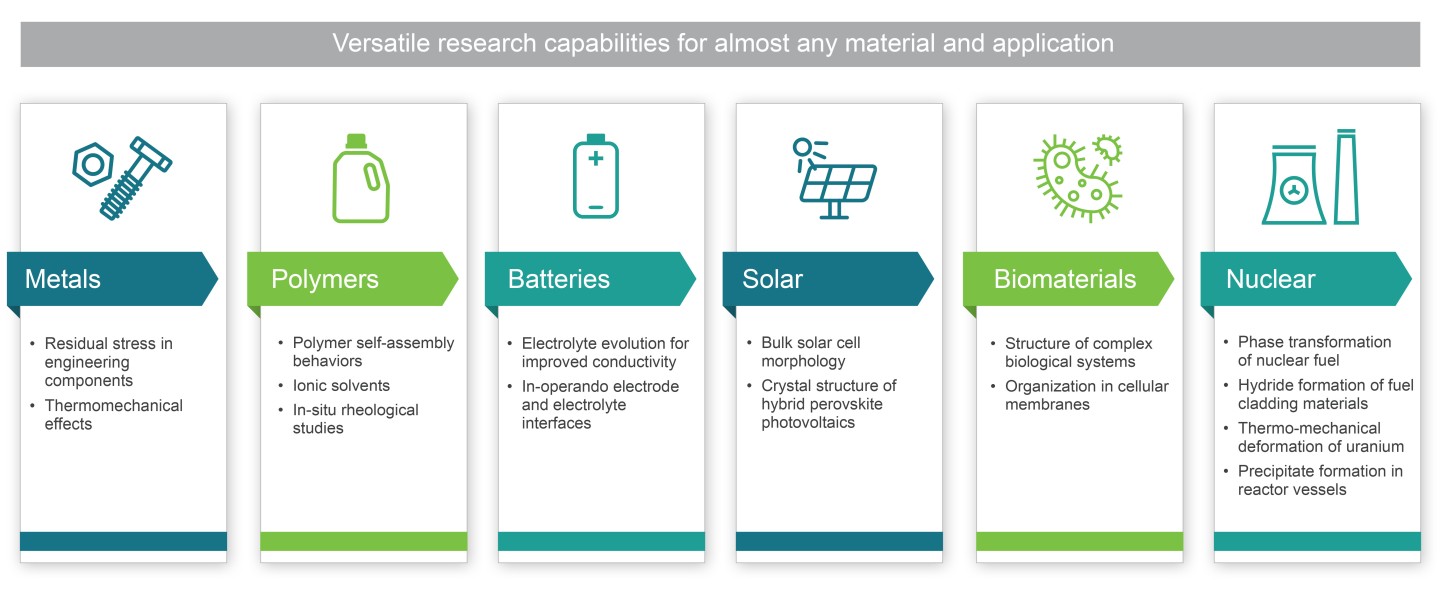Why Use Neutrons?
Our technology and our economy require increasingly complex materials with specific properties. For nearly a century, neutrons have played a leading role in increasing industry’s understanding of the material world. They allow scientists and engineers to study materials, revealing their atomic structures, dynamics, and magnetic properties to reveal how to make the materials stronger, lighter, and perform better.
Neutron scattering experiments play a central role in probing the properties of new materials critical to advances in energy, nanotechnology, transportation, communication, and many other areas.
Information provided by neutron scattering can facilitate product development and improve the performance of new materials. Various neutron scattering techniques offer fundamental and practical insights into material structures that are important at length scales from the atomic to the nanoscale to bulk materials. Time and energy scales can be studied from local atomic vibrations that define fundamental material properties up to kinetic processes that are relevant to real-world performance and manufacturing.
The unique capabilities of neutron scattering techniques have attracted the attention of industrial and applied scientists working in many industrial sectors. For example, neutron imaging has powerful applications in additive manufacturing where neutron computed tomography data can be quantitatively compared with engineering drawings (e.g., studying the internal structure of turbine blades).
The penetrating power and uniquely non-destructive nature of neutrons offer unique opportunities for non-invasive testing on an atomic scale to investigate residual stress, deformation, and the microstructure of engineering components—often during their normal operating conditions under load and/or in high temperature.
Note: some samples may become activated and must then be treated as a radiological material after the experiment. The scientific staff will work with the industrial partner to properly manage the sample after the experiment.



